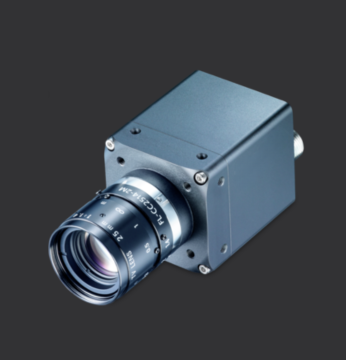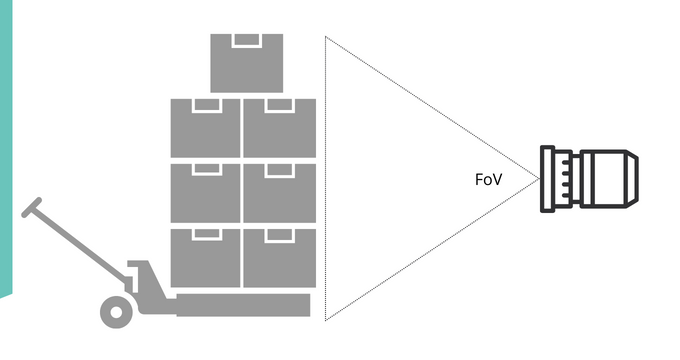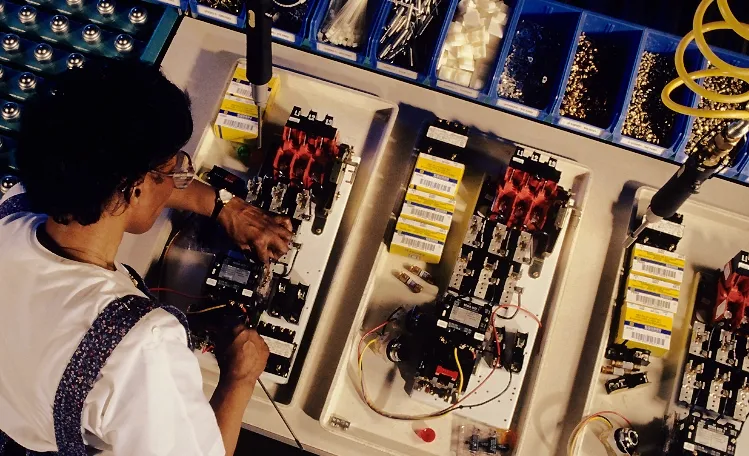A Guide to Industrial Cameras for Pallet Barcode Scanning
Pallet scanning often refers to the process of reading data from barcodes on the pallets. This process can be done manually with handheld scanners or automatically with fixed barcode scanners placed at strategic points in the logistics chain, such as loading docks or warehouse entrances. A pallet scanning system combines an industrial camera in tandem with barcode scanning software.
The right camera setup can significantly streamline your logistics, contributing to smoother, faster, and more reliable operations.

Key factors of camera specifications for your pallet scanning system
The clarity of an image for barcode scanning from a few meters away will depend on several factors, including the resolution of the camera, the size of the barcode, the quality of the lens, and the lighting conditions.
To ensure that barcodes can be read accurately from a few meters away, here are some things you might need to consider.
Area scan cameras are preferred over line scan cameras.
There are two main types of cameras used in industrial settings: area scan and line scan cameras. Area scan cameras capture a two-dimensional image of an area all at once. This is particularly useful if the barcodes are distributed around the pallet and cannot be scanned one at a time. On the other hand, line scan cameras capture one line of pixels at a time and are most effective for inspecting objects that are moving continuously. For most pallet scanning scenarios, an area scan camera is usually the preferred choice.
A resolution of 8 megapixels or higher
A higher resolution enables the camera to capture more detail, which can be crucial for accurately reading barcodes or QR codes. We recommend choosing a camera with a resolution of 8MP or higher. Sometimes, camera specifications might mention 4K resolution. In this context, a 4K resolution camera refers to one with a resolution of 3840 x 2160 pixels, assuming we’re discussing 4K UHD, a common standard for TVs and computer monitors. This equates to approximately 8.3 megapixels. For reference, the iPhone 14 is equipped with two cameras, each with a resolution of 12MP.
A medium to wide field of view
The field of view (FoV) of a camera is essentially the extent of the observable world that can be seen at any given moment. This is influenced by both the lens and the camera’s sensor size. In the context of industrial cameras, this would define how much of the scene in front of the camera can be captured in a single frame. Generally, it’s important to ensure that the FoV is large enough to capture the entire object of interest but not so large that the object only occupies a small part of the image.

Manual focus is sufficient
Many lenses used in industrial cameras are manually focused. In other words, you physically adjust the focus ring on the lens to set the focus distance. Once set, anything at that distance will be in sharp focus, while things closer or further away will be blurrier, depending on the depth of field. The depth of field is the range of distance within which objects will appear reasonably sharp in the image. If an object is not placed at the optimal distance for a fixed focus lens, the image of the object will indeed be blurry. However, the range of distances that are in focus can be quite wide, depending on the depth of field.
Frame rate
The frame rate indicates how many images the camera can capture per second. A higher frame rate is important when scanning moving pallets to ensure that every package’s barcode gets captured.
Recommended distance for a clear barcode image
For a typical warehouse setup with pallets, the camera might be placed a few meters away from the goods. This distance could be adjusted based on these factors:
- Field of View: The distance must be such that the entire object or area of interest fits within the camera’s field of view. Read the following section on how to calculate the width and height of the area visible to the camera.
- Resolution: Larger barcodes can be read from a greater distance than smaller barcodes. And cameras with a large resolution can handle smaller barcodes better.
- Depth of Field: The depth of field (DoF) refers to the range of distance within which objects will appear sharp in the image.
- Lighting: Lighting can also affect image clarity. If the camera is too far away, the light may not be sufficient to illuminate the object properly. Conversely, if the camera is too close, there could be shadows or overexposure.
Calculate the width and height of the area visible to the camera
To calculate the width and height of the area visible to the camera (assuming a rectangular field of view), you can use the following formulas, which are derived from simple trigonometry:
Width = 2 * (Tan(FoV_horizontal / 2) * Distance)
Height = 2 * (Tan(FoV_vertical / 2) * Distance)
For example, for a camera with a FoV of 60 degrees, the camera would capture an area of approximately 1.15 meters by 1.15 meters when it is placed 100 centimeters away from the goods.
| Example | |
|---|---|
| FoV_horizontal | 60 |
| Distance (m) | 1 |
| Width captured | 1.15 m |
Come in a full circle: Make sure the barcode module size is larger than 2px
The resolution of the camera determines the level of detail it can capture. Higher resolution means more pixels and finer details.
When we also take into consideration the print size of the barcodes, the number of modules, and the camera resolution, we can calculate the module size in pixels. For example, in the following example, a printed QR code of 3cm results in 2.75 pixels for each module. This is a fair quality for successful decoding by good QR code software.
| Example | |
|---|---|
| Print size of QR Code (cm) | 3x3 |
| Count of modules | 29x29 |
| Camera resolution in pixel | 4096x3072 |
| Module size | 2.75 pixels |
Camera mounting
This barcode automation system must be robust enough to handle varying light conditions, different package colors and materials, motion blur, and other challenges.
Where do I mount the cameras?
Depending on the specific layout and needs of your operation, you might mount the cameras:
- Above the conveyor belt or track
- On the sides of the conveyor belt or track
- Below the conveyor belt or track
How many cameras are mounted on each side?
A common approach might be to use one or two high-quality cameras on each side of the conveyor, carefully positioned and calibrated to capture as much of the pallet as possible.
Working together with Dynamsoft Barcode Reader SDK
Choosing the right industrial camera for pallet scanning involves an understanding of your specific requirements, such as the size and type of barcodes you’ll be scanning, the speed at which your pallets move, and the lighting conditions in your facility. By considering the factors outlined above, you can make an informed decision that will help optimize your pallet scanning process.
Let’s discuss how we can tailor our offerings to your unique needs and goals. Connect with our sales team now at sales@dynamsoft.com or call us at 1-(604) 605-5491.



 Blog
Blog